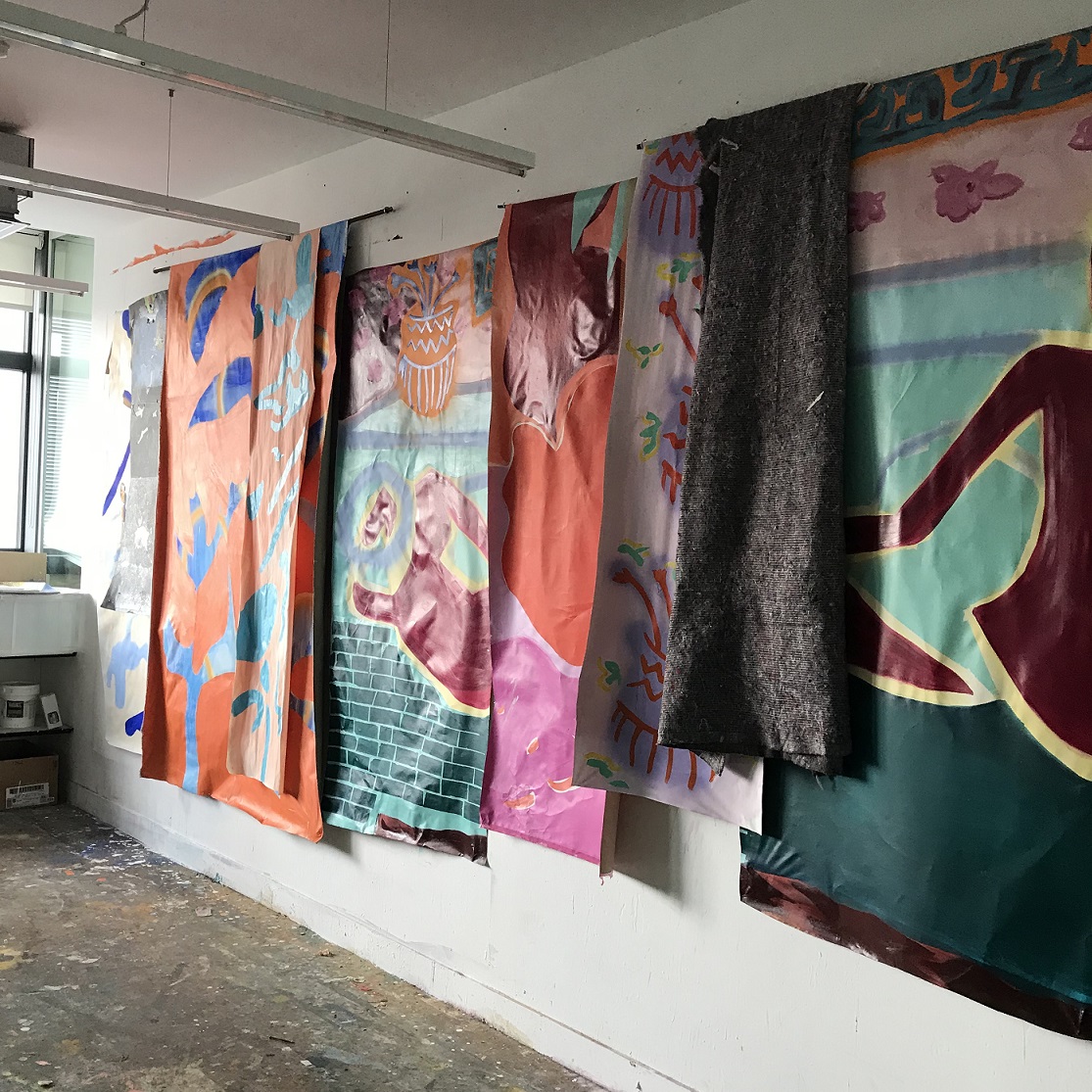Artists’ Residencies

An artist’s residency – or Artist-in-Residence (AiR) – is when an artist relocates for a period of time to another studio or location, usually within an institution set up for this purpose. Residencies can range from a few days to a year, or longer. There is often a proposal written by the artist stating their intentions and learning outcomes on the residencies, which can act as a starting point that is likely to change as the time goes on, especially for longer residencies.
Often the hosting institution will play a role by visiting the artists, arranging events such as open studios or talks, or organising field trips. Locations of studios range widely: sometimes you are alone in a forest (Merz Barn in the English Lake District), or an off-grid tree house in Scotland (Outlandia), sometimes with a large group of artists abroad (British School at Rome), other times you may find yourself as an ‘artist in residence’ in a college with a studio among the students, or in an artist-run residency in a studio block.
There are residencies all over the world where one can visit for a period of time to research and make work in a particular environment; such as Antarctica (funded by National Science Foundation) or near a volcano in Hawaii (National Parks Art Foundation), there is even a residency on a cargo ship (Container Artist Residency)!
It is this unfamiliar environment outside your daily studio routine which contributes to a change in thinking and that allows new ideas to be generated. New people and social interactions with the host institution, public and new audiences, can encourage these new attitudes or ways of thinking.
A residency is a sacred time set aside for a particular purpose and that can create a bubble of intense studio thinking or quiet contemplation. On every residency I have been on I have learnt something new and unexpected. Something I couldn’t have experienced in my studio alone. That is the nature of an artist’s residencies and the importance of their purpose.
TFAC (The Fine Art Collective) has two artist studios located in London, on the same floor as the Laboratory that researches and develops new and existing materials for Winsor & Newton, Liquitex and Conté à Paris. These studios run a rolling programme for artists to investigate their practice with a fully stocked studio of materials including acrylic, oil, watercolour, mediums, brushes, paper, canvas and more, allowing an artist to experiment with materials they may not have had the chance to use before. This unique residency also encourages a dialogue between the chemists in the Lab which often results in a mutually beneficial knowledge exchange; the chemists can see how artists are using the paints (sometimes in unconventional ways) and the artists can learn about the chemistry and test the bounds and potential of paint. Residencies are organised by Liquitex, Winsor & Newton, Elephant Magazine and TFAC and encourage artists to experiment with paint’s behavioural qualities in ways not possible otherwise.
Recently I visited these studios; TFAC, which concentrates on exchanges between colleges and students, both local and internationally, was hosting Lisette van Hoogenhuyze a student from HKU University of the Arts Utrecht, Netherlands. Lisette arrived with a thin strip of tie-dye material as a starting point, or talisman holding visual information about patterns and mark-making. In her paintings, she takes enlarged extracts from pattern and decoration and paints onto panels of canvas which are displayed from protruding structures on the wall. They reminded me of brightly coloured beach towels and of Matisse as they hung waiting for activation. On discussion, I was excited to discover that Lisette sometimes finds these patterns through her own photography of beach scenes or poolside snapshots, playfully tying in this ‘leisure’ reference to her paintings.
And just like Matisse, who carried visual memories from his trip to the South Pacific for years afterwards, I’m sure some of the photos and observations Lisette will have taken during her residency in London will one day end up extracted into patterns for new paintings, transferring moments or snapshots of her TFAC residency into material for future paintings.
Karen David, November 2019

